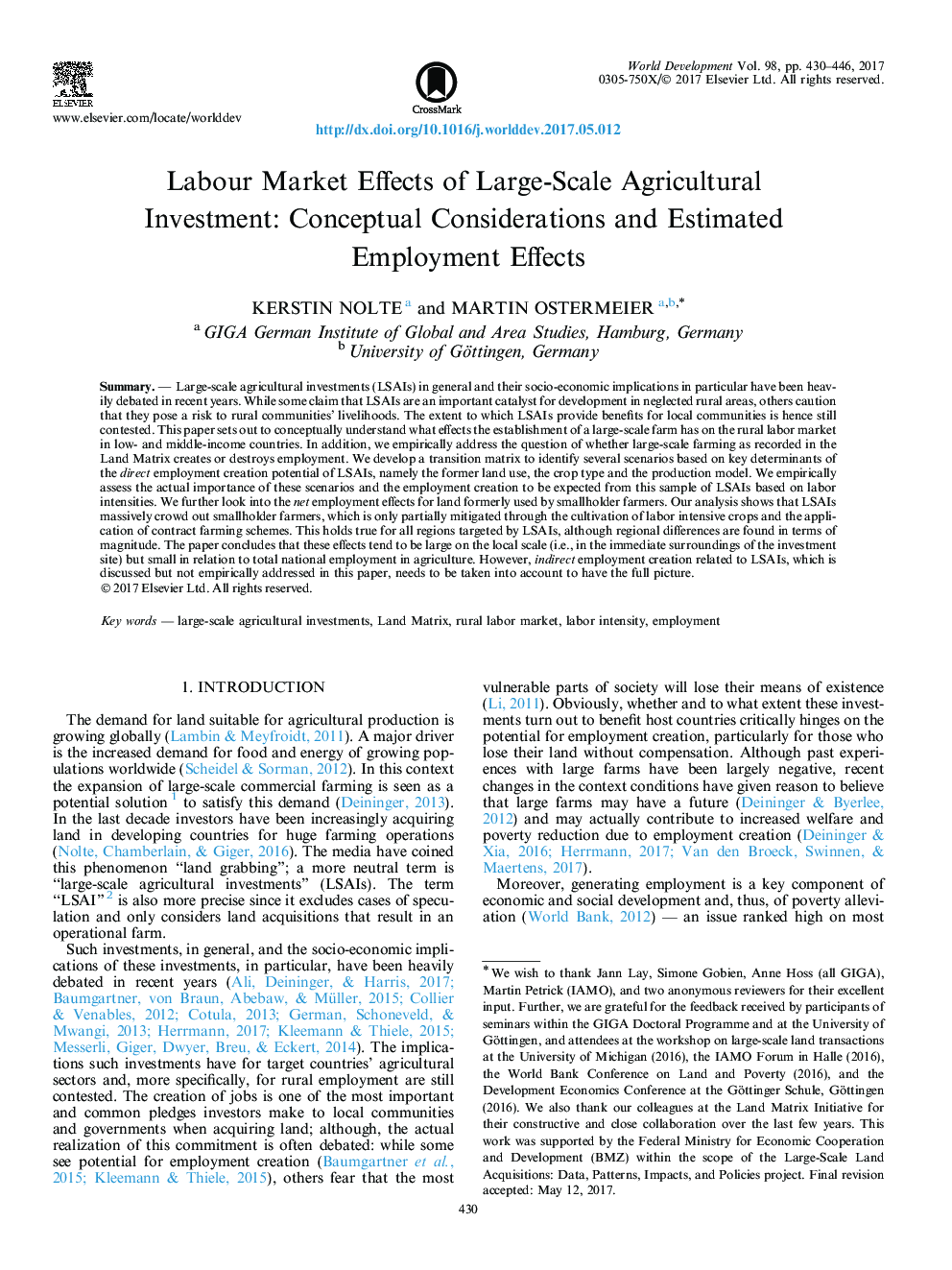| Article ID | Journal | Published Year | Pages | File Type |
|---|---|---|---|---|
| 5105155 | World Development | 2017 | 17 Pages |
â¢Employment effects depend on former land-use, the crop cultivated, and the production model.â¢Direct job creation is limited and many projects massively crowd out smallholders.â¢Crowding out occurs in all regions but with considerable regional differences.â¢Large losses on the local scale but small in relation to total employment in agriculture.â¢Indirect employment effects become visible mostly in the medium- and long-term.
SummaryLarge-scale agricultural investments (LSAIs) in general and their socio-economic implications in particular have been heavily debated in recent years. While some claim that LSAIs are an important catalyst for development in neglected rural areas, others caution that they pose a risk to rural communities' livelihoods. The extent to which LSAIs provide benefits for local communities is hence still contested. This paper sets out to conceptually understand what effects the establishment of a large-scale farm has on the rural labor market in low- and middle-income countries. In addition, we empirically address the question of whether large-scale farming as recorded in the Land Matrix creates or destroys employment. We develop a transition matrix to identify several scenarios based on key determinants of the direct employment creation potential of LSAIs, namely the former land use, the crop type and the production model. We empirically assess the actual importance of these scenarios and the employment creation to be expected from this sample of LSAIs based on labor intensities. We further look into the net employment effects for land formerly used by smallholder farmers. Our analysis shows that LSAIs massively crowd out smallholder farmers, which is only partially mitigated through the cultivation of labor intensive crops and the application of contract farming schemes. This holds true for all regions targeted by LSAIs, although regional differences are found in terms of magnitude. The paper concludes that these effects tend to be large on the local scale (i.e., in the immediate surroundings of the investment site) but small in relation to total national employment in agriculture. However, indirect employment creation related to LSAIs, which is discussed but not empirically addressed in this paper, needs to be taken into account to have the full picture.
